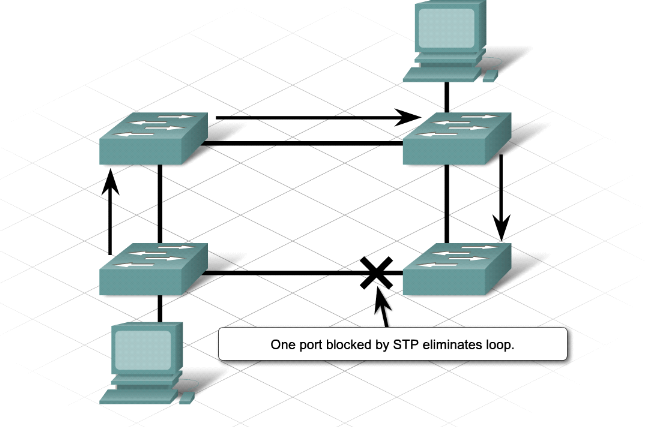5.3 Switching
technologies
Campus network design topologies should meet a customer's goals
for availability and performance by featuring small bandwidth domains, small
broadcast domains, redundancy, mirrored servers, and multiple ways for a
workstation to reach a router for off-net communications.
2.21. 5.3.0Spanning Tree Protocol
(STP)
An open standard protocol, documented in IEEE 802.1D, used in a
switched environment to create a loop-free logical topology and logical tree
with no redundancy.
ü Potential loop detection and port blocking
ü Redundancy without switching loops
ü To prevent switching loops, STP:
1. Forces certain interfaces into a standby or blocked state
2. Leaves other interfaces in a forwarding state
3. Reconfigures the network by activating the appropriate standby
path, if the forwarding path becomes unavailable
Due to the weakness of STP which are;
a. Passively waited for the network to converge before it
transitioned a port into the forwarding state.
b. To achieve quick convergence, a network administrator had to
carefully tune the conservative default values for the Maximum Age and Forward
Delay timers, which put the stability of the network at stake.
The implementation of more reliable STP called RSTP (Rapid STP)
introduced In 2004, the IEEE incorporated its 802.1w standard, «Rapid
Reconfiguration of Spanning
Tree,» into the IEEE 802.1D standard. The goal of the 802.1w
committee was to standardize
an improved mode of switch operation that reduces the time STP
takes to converge to a least-cost spanning tree and to restore service after
link failures. Which solved all the of normal STP with the following
solution;
7. Can actively confirm that a port can safely transition to the
forwarding state without having to rely on any timer configuration.
8. To achieve convergence or convergence in a few hundred
milliseconds.
9. There is now a synchronization mechanism that takes place
between RSTP-compliant bridges so that they actively build the topology as
quickly as possible.

Figure5.9: Spanning tree illustration in Switching
| 


